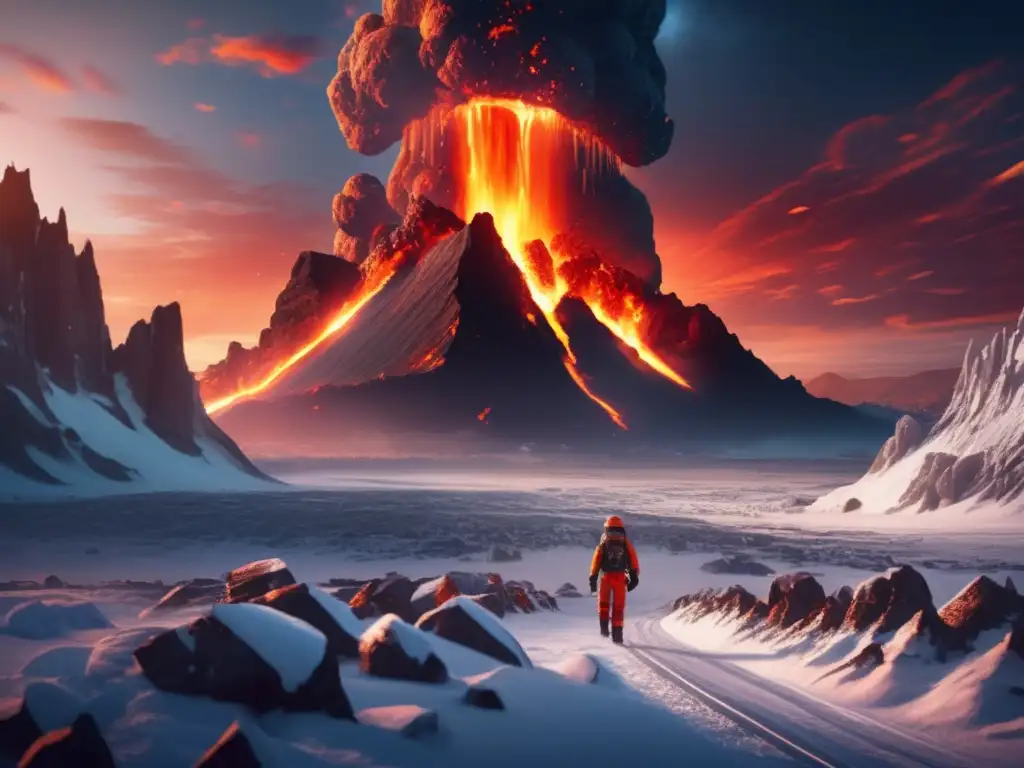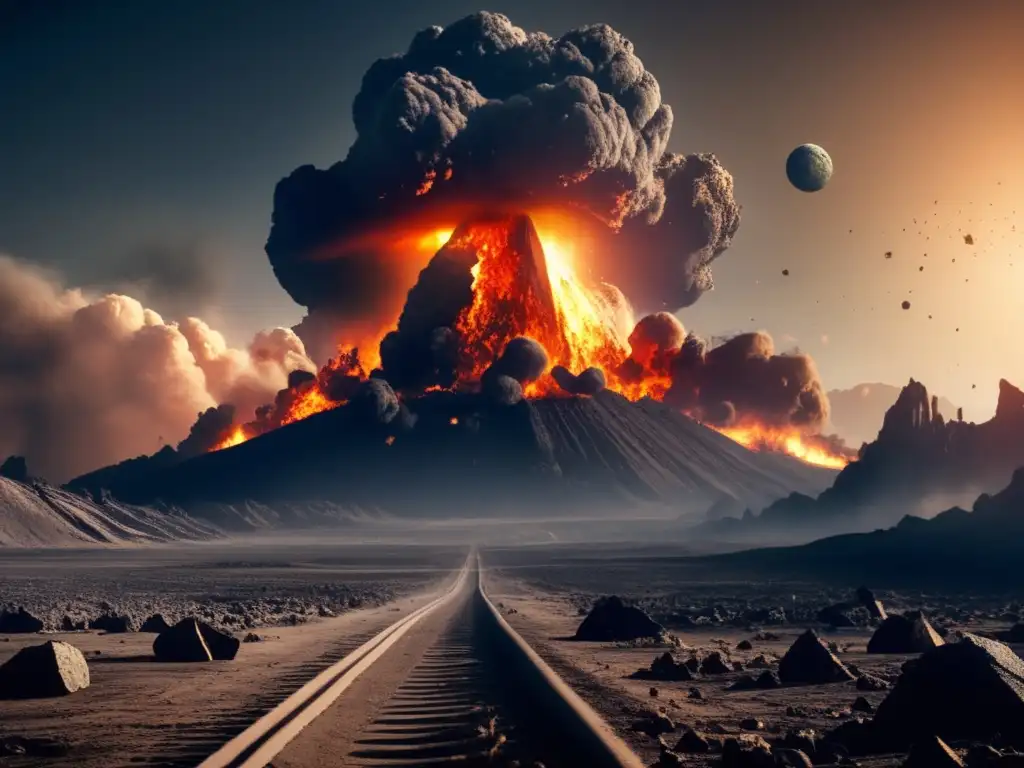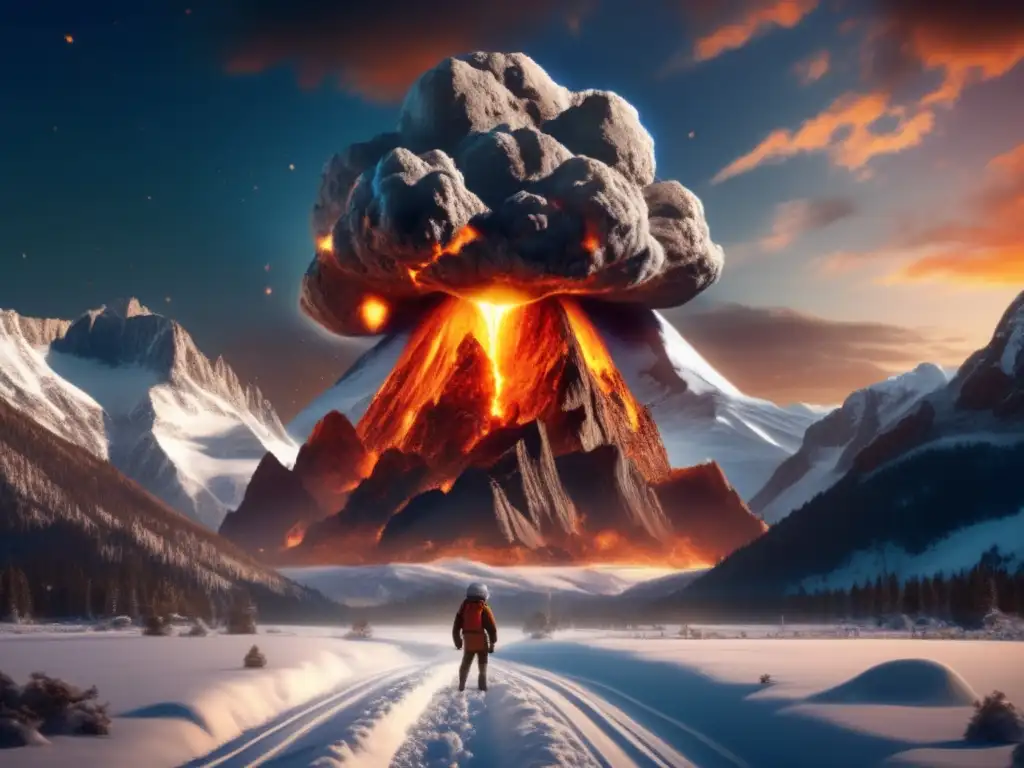Fire And Ice: The Dual Threat Of Asteroid Impacts

Introduction
Asteroids are fascinating celestial objects that have captured the attention of astronomers, scientists, and the general public alike. While they can be studied for their scientific value, asteroids can also pose significant risks to life on Earth. One of the most significant dangers associated with asteroids is the threat of asteroid impacts, which have the potential to cause widespread destruction, loss of life, and other catastrophic outcomes. In this article, we will explore the dual threat of asteroid impacts from both fire and ice perspectives.
The Impact of Fire

The Role of Fire in Asteroid Impacts
When an asteroid collides with Earth, it can release a tremendous amount of energy in the form of heat. As the asteroid travels through the Earth's atmosphere, it experiences significant friction, which can generate enough heat to cause the asteroid to vaporize or explode. This process generates a fireball that can be seen from a significant distance and often results in widespread fires and devastation in the immediate vicinity of the impact site.
Notable Examples of Fire-Impacted Craters
One of the most famous examples of a fire-impacted crater is the Barringer Crater in Arizona, USA. It was formed by an asteroid impact approximately 50,000 years ago and is 1.2 kilometers wide and 170 meters deep. Another notable example is the Ries crater in Germany, which was formed around 14.5 million years ago and is approximately 24 kilometers in diameter. The impact that created this crater would have generated an immense fireball, causing widespread destruction in the surrounding area.
Fire-Based Mitigation Strategies
Given the significant threat posed by fire in asteroid impacts, several mitigation strategies have been proposed to reduce the potential damage. One such approach is to use controlled fires to burn off any combustible material in the vicinity of the impact site before the asteroid impact occurs. This can help reduce the risk of fires caused by the impact itself and limit the spread of fire.
The Impact of Ice

The Role of Ice in Asteroid Impacts
A less well-known threat associated with asteroid impacts is the danger of ice. When an asteroid collides with Earth, it can release a significant amount of energy, causing the immediate area to become extremely hot. However, this heat can also cause any nearby ice or snow to melt, which can result in flooding and other water-related hazards. In some cases, the rapid melting of ice and snow can even lead to landslides.
Notable Examples of Ice-Impacted Craters
One example of an ice-impacted crater is the Haughton impact crater in the Canadian Arctic. The impact that created this crater occurred approximately 23 million years ago and resulted in the formation of what is now a frozen lake. Another notable example is the Hiawatha crater in Greenland, which was formed by an asteroid impact approximately 13,000 years ago. Analysis of sediments in the surrounding area suggests that the impact resulted in significant amounts of melting ice, leading to a rise in sea levels.
Ice-Based Mitigation Strategies
Globally, sea levels are rising due to global warming, and this presents a significant challenge when it comes to mitigating the impact of ice in asteroid impacts. However, one potential strategy is to use advanced warning systems to detect approaching asteroids and prepare for the impact. This could include evacuating areas at risk of flooding or developing infrastructure to deal with potential flooding events.
Frequently Asked Questions

-
What is an asteroid impact?
An asteroid impact occurs when an asteroid collides with Earth, causing widespread destruction and potential loss of life.
-
What are the most significant dangers associated with asteroid impacts?
The most significant risks associated with asteroid impacts include fire, floods, landslides, and other hazards that can cause widespread destruction and loss of life.
-
How can we reduce the impact of asteroid impacts?
Several strategies have been proposed to mitigate the impact of asteroid impacts, including early warning systems, evacuation plans, and controlled fires to reduce the spread of flames after an impact.
-
What are some notable examples of asteroid impact craters?
Some notable examples of asteroid impact craters include the Barringer Crater in Arizona, USA, and the Ries crater in Germany. Both were formed by massive asteroid impacts and stand as a testament to the destructive power of these celestial objects.
-
What are some of the less well-known threats associated with asteroid impacts?
One less well-known threat associated with asteroid impacts is the danger of ice and water-related hazards, such as flooding and landslides, caused by the rapid melting of ice and snow due to the heat generated by the impact.
Conclusion
Asteroid impacts pose a severe threat to life on Earth, but by understanding the dual danger posed by fire and ice, we can develop better strategies for mitigating their impact. While it is impossible to predict when an asteroid impact will occur, early warning systems and other mitigation strategies can help reduce the potential for loss of life and widespread destruction. We encourage readers to share their thoughts on this important topic and to engage with www.asteroidrealm.com in any way they can.
Additional Resources

For more information on asteroid impacts and related topics, please see the following resources:
 Rebuilding After Impact: How Earth Recovers
Rebuilding After Impact: How Earth Recovers Mega-tsunamis: The Water Impact Of Asteroids
Mega-tsunamis: The Water Impact Of Asteroids When Sky Falls: The Effects Of Asteroid Impacts
When Sky Falls: The Effects Of Asteroid ImpactsIf you want to discover more articles similar to Fire And Ice: The Dual Threat Of Asteroid Impacts, you can visit the Asteroid Impacts category.
Leave a Reply

Articulos relacionados: